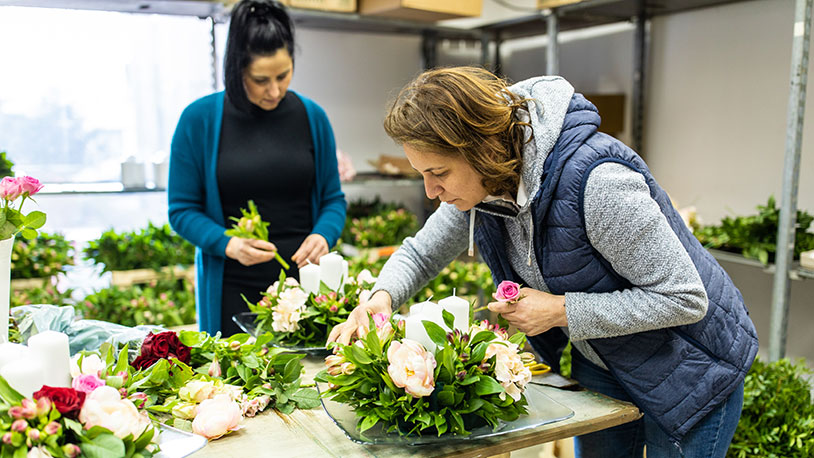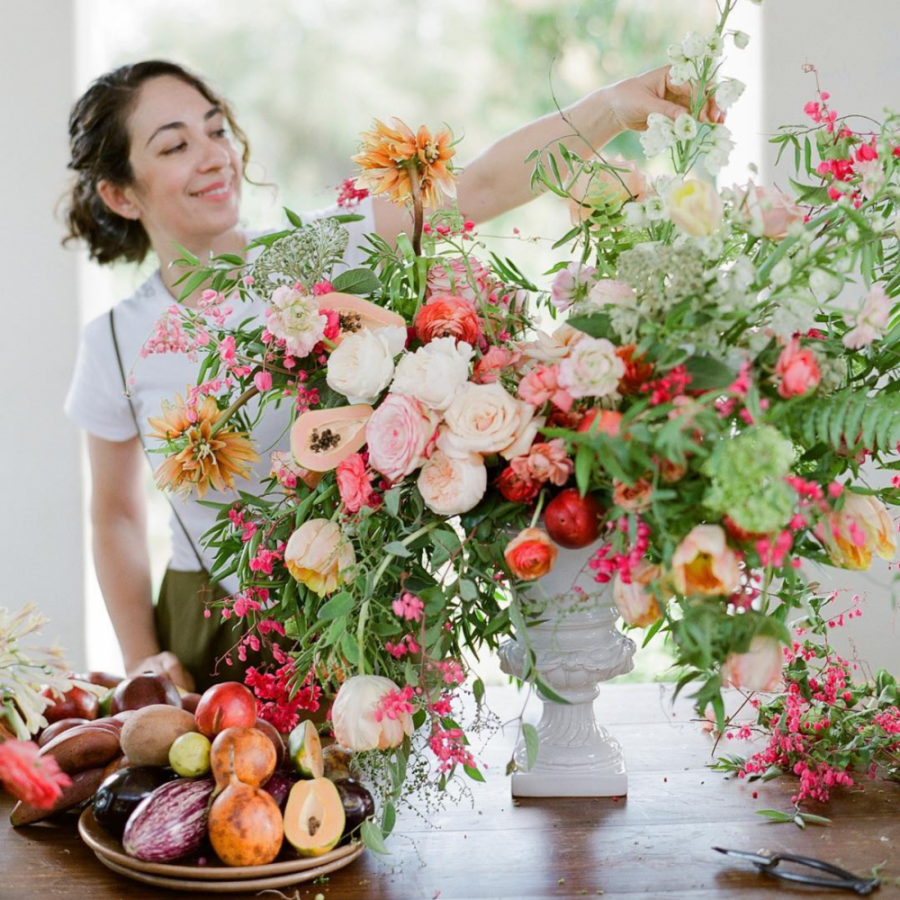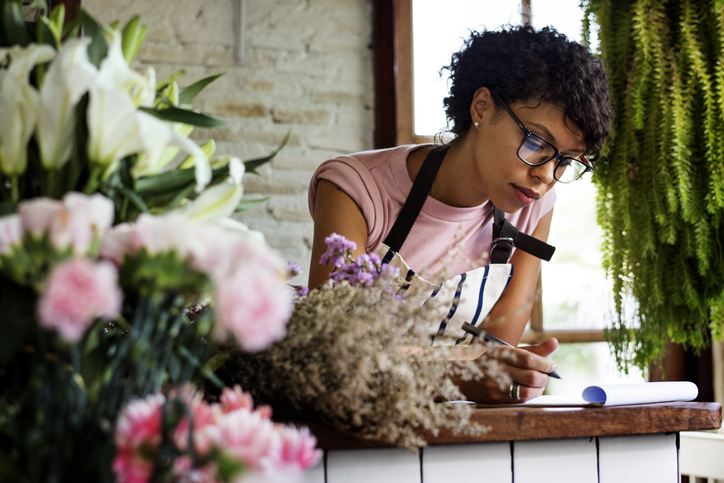If you’re looking to add a touch of beauty to your home, or just want to create a more lush environment, learning how to be a floral designer is the way to go. Not only will you be able to create stunning flowers that show off your skills as a designer, but you’ll also learn about the different types of flowers and their methods of growth. Whether you’re looking for an easy-to-follow guide or something more challenging, learning how to be a floral designer is the perfect way to get started in this exciting field.

Learn About Being a Floral Designer in 2024
Few things are more satisfying than creating beautiful pieces of art with your own hands. That’s why becoming a floral designer is so rewarding. Not only can you create stunning designs for your own home, but you can also turn your skills to create amazing pieces for special occasions.
What is a floral Designer?
Floral designers design flowers for a variety of different purposes, including for wedding and event decoration, home decor, and more. They create plants and flowers that are intricately designed and arranged to look beautiful. Most floral designers have a degree in horticulture or landscape design, as well as experience working with plants and flowers. They use their knowledge and skills to create beautiful flowers that will add beauty and élan to your space.
A floral designer, also called a florist, is a professional who creates decorative displays, bouquets and arrangements using plants, flowers and other accessories. A florist typically works with fresh flowers, but they can also use dried or artificial ones and often include other types of greenery as well . They create floral arrangements for a number of occasions, such as weddings, banquets, festivals and other special ceremonies or holidays.
A floral designer’s work varies from day to day as their clients have different needs depending on the size of the arrangement and how much time it will take to complete. Customers may ask florists to create a bouquet for an individual person, small displays for settings with limited space or grand arrangements for larger venues.

What does a floral designer do?
A floral designer works closely with customers to create a floral display that meets the client’s specific request. Florists may make recommendations to their clients based on their own expertise and help the client develop their ideas in the creative process. Customers primarily place orders for a special occasion in advance, so floral designers must stay organized to meet their client’s needs on time and ensure that flowers are still fresh before delivery.
A floral designer creates beautiful designs that are inspired by nature. They may specialize in single or multiple flower arrangements, and they may use natural dyes, materials, and techniques to create their pieces. Floral designers may also specialize in specific types of flowers such as chrysanthemums, lilies, or roses.
Some additional duties of a florist include:
-
Wrapping arrangements
-
Accommodating their customer’s budget
-
Ensuring correct order delivery
-
Managing and maintaining a flower shop
-
Sanitizing and cleaning their flower shop of floral debris
-
Cutting flowers
-
Transplanting plants and mix flower food solutions
-
Maintaining the longevity of plants
-
Maintaining sufficient floral supply
-
Training new florists
Important skills to have as a floral designer
Floral designers must possess knowledge of plant care and the elements of floral design. It is also important for them to know the symbolic meaning behind different types of flowers and when certain flowers are in season so that they can use this knowledge to provide the right recommendations to their customers. In addition, they must also understand the unique characteristics of plants, such as which flowers can last longest out of water. Having expert knowledge about the unique care each flower or plant needs is important so that they can increase the longevity of the arrangement.
An experienced floral designer can determine which flowers coordinate best together and how many flowers are needed for each specific design .
Some additional skills needed by floral designers include:
-
Wrapping and tying ribbons and bows
-
Cutting and trimming flowers and plants
-
Sheering
-
Customer service
-
Communication
-
Time management
-
Organization
-
Design
-
Creativity
-
Artistic abilities
-
Flower shop management
-
Attention to detail

Floral designer qualifications and requirements
Becoming a floral designer does not require a college education, so a high school diploma or equivalent is sufficient. However, some useful postsecondary resources, such as community colleges and vocational schools, can teach you how to start your own floral design business or flower shop. These classes teach the basic principles of floral design and how to advertise your business.
Related: 7 High Paying Mortuary Jobs
Individuals seeking to start a career in floral design can also gain valuable practice and hands-on experience through internships or part-time or volunteer work at a flower shop. The role of a floral designer is primarily experience-based, and employers may look for individuals who already have some level of floral care and training. However, a floral designer who wants to expand their floral expertise can become a Certified Floral Designer through the American Institute of Floral Designers.
What to expect from a floral designer work environment
Most floral designers work at retail businesses, wholesale flower sellers, flower shops and wedding or event planning agencies. In these settings, they work with walk-in customers and communicate with customers over the phone and on the internet when taking orders. Floral designers who are freelancers typically work flexible contract-based schedules where they’re hired for events such as weddings.
Full-time floral designers sometimes have to travel to assist with events but are otherwise based in one location to maintain their flower shop. During busy holidays like Mother’s Day or Valentine’s Day, florists may have to work additional hours to accommodate the increased demand.
Florists remain on their feet most of the time tending to the flowers, helping customers and maintaining the cleanliness of their workspace and environment. They may also have to take special care to prevent bugs from taking shelter in plants and flowers.
How to become a floral designer in 4 steps
Here are four steps to consider when wanting to become a floral designer:
1. Learn the basics of floral design and plant care
This entails learning basic floral design methods and plant care techniques that are commonly used among professional florists. You can gain this experience through opportunities that provide hands-on experience, such as taking floral classes, working with a mentor, interning at a floral design agency or volunteering at a local flower shop.
These basics include techniques and principles such as:
-
Flower prepping
-
Flower arrangement
-
Color coordination
-
Ribbon tying and gift wrapping
-
Handling sharp tools
-
Plant health
-
Trimming and sheering
-
Basic flower gardening
2. Develop your floral design skills
The best way to develop your floral design skills is to practice. As you practice the basic techniques of floral design and care, your skills are likely to develop over time, and you’ll eventually develop your own unique style and technique.

3. Decide how and where you want to work
This means deciding what kind of floral designer you want to be. Some floral designers work as freelancers, while others work at established flower shops, in retail stores or for wedding agencies.
4. Create a website, portfolio and resume
If you want to work as a freelance floral designer or an in-house florist, creating a website is a great way to present your skills, achievements and expertise to potential clients. The portfolio builds on your talents and showcases the floral displays, designs, and arrangements that you have created. A resume can also be beneficial because it shows a timeline of your work history and your commitment to the field. A well-written and achievement-oriented resume can help you secure a job as a floral designer.
Related careers
Are you thinking about a career change? Or are you considering a career change but don’t know where to start? Here are some related careers that may be a good fit for you.